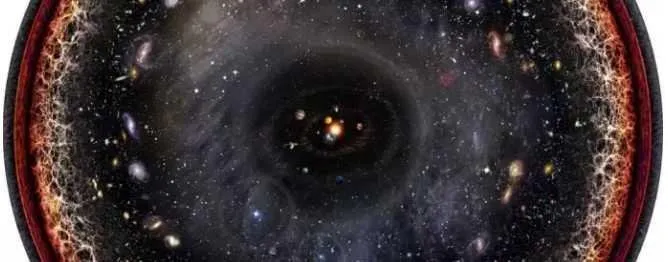
Is not that beautiful? This is the concept of the logarithmic scale pictorial of the universe with the solar system in its center.
The celestial bodies that surround the solar system are the inner and outer planets, the Kuiper belt, the Oort cloud, the Alpha Centauri star, the Perseus Arm, the Milky Way galaxy, the Andromeda galaxy, other nearby galaxies, the cosmic web, cosmic microwave radiation, and invisible plasma produced by Big Bang. See the image below for the full version and can be enlarged.
Created by musician and artist Pablo Carlos Budassi, this image is based on a logarithmic map of the universe united by Princeton University researchers, as well as images produced by NASA based on observations with their telescopes and spacecraft.
The team from Princeton, led by astronomers J Richard Gott and Mario Juric, based on the logarithmic map of the universe from the Sloan Digital Sky Survey.
For the last 15 years, they used a 2.5-meter wide-angle optical telescope at the Apache Point Observatory in New Mexico to create the most detailed three-dimensional maps of the universe, including spectra for more than 3 million astronomical objects.

The logarithmic map is a very useful way to visualize something unimaginably large like the universe, because any increase in the axis will give rise to a factor of 10. The Princeton team published it in the Astrophysical Journal in 2005, but you can see and download- on this site.
Although very useful, there is not much to see on this logarithmic map, so Pablo Carlos Budassi decided to make something more interesting.
According to Kelly Dickerson at Tech Insider, he got the idea of turning him into a giant circle while making hexaflexagons for his son's 1st birthday.
Hexaflexagons are a paper polygon with a large number of deceptive fields, you may have made it in school but do not know its name.
"When I drew hexaflexagons for my son's birthday souvenirs, I started drawing the central landscape of the cosmos and the solar system," Budassi told Tech Insider.
"That day the idea of a logarithmic scene emerged, then I combined it with Photoshop using images from NASA and some self-made textures."
Click here for the full version of Budassi, and see the video below to see the different types of cosmic visualizations generated by astronomers at the University of Hawaii, this is our Milky Way galaxy, which deals with 100,000 surrounding galaxies.
thank for reading
